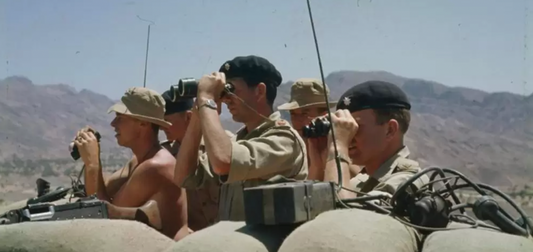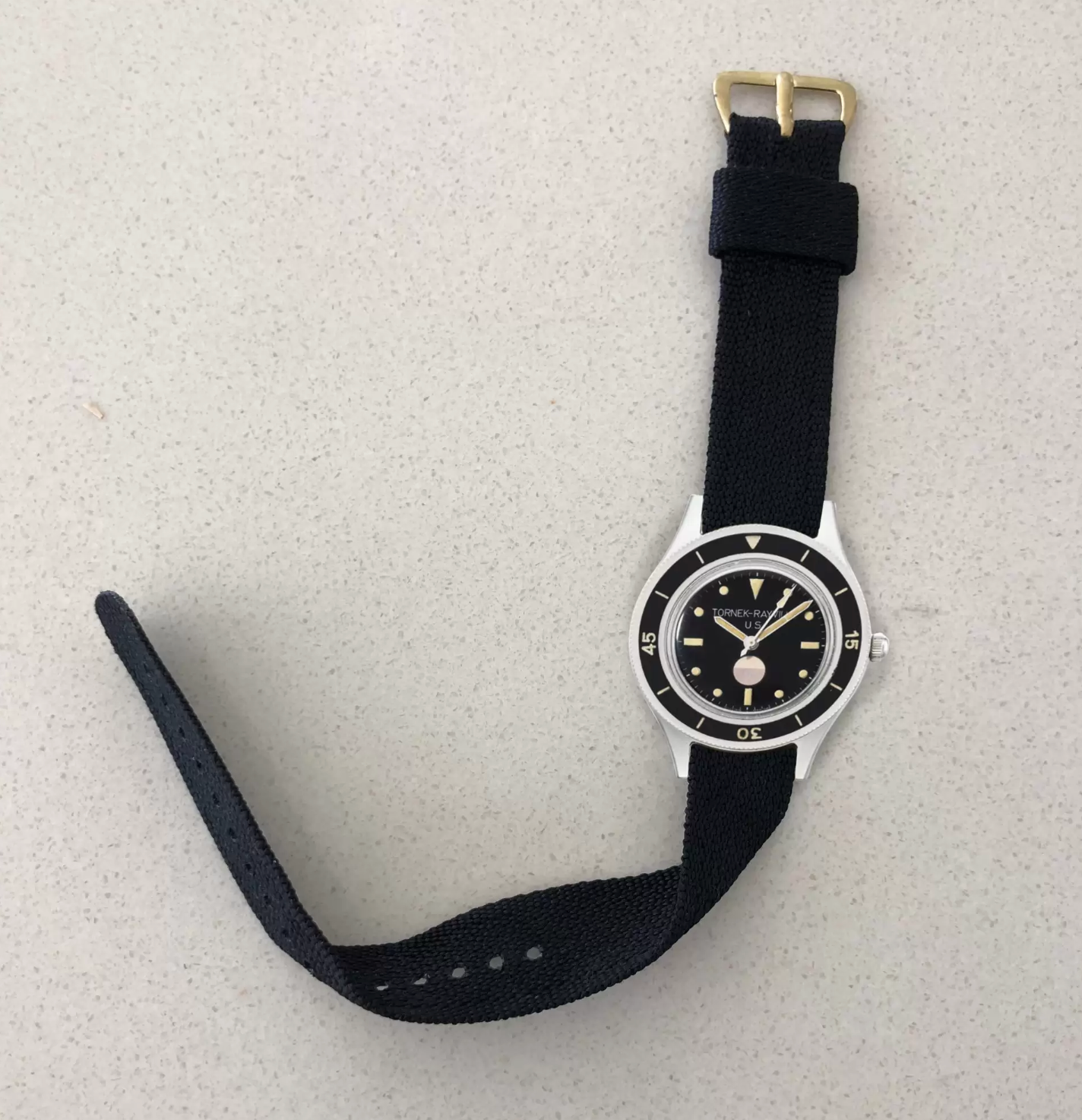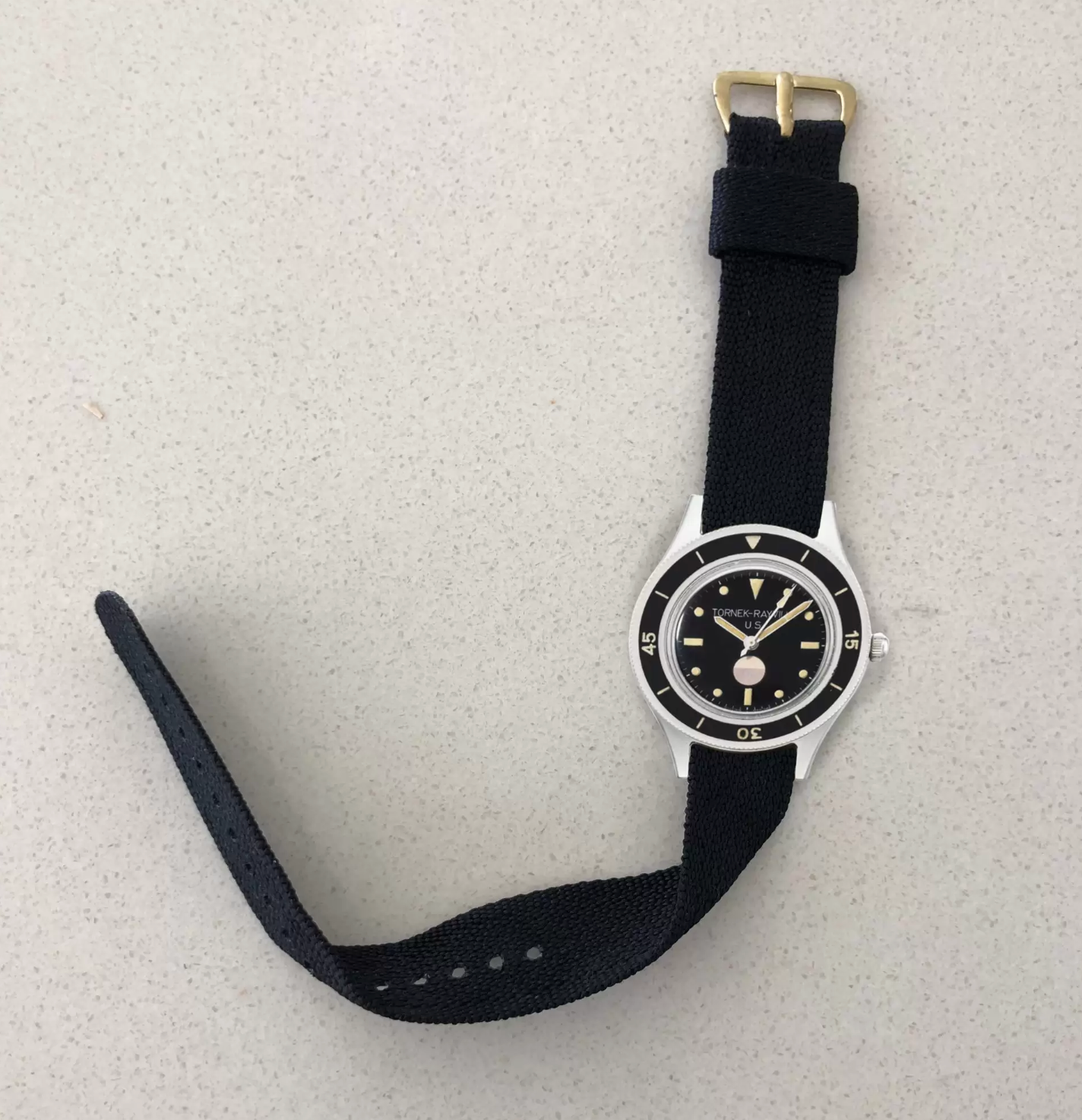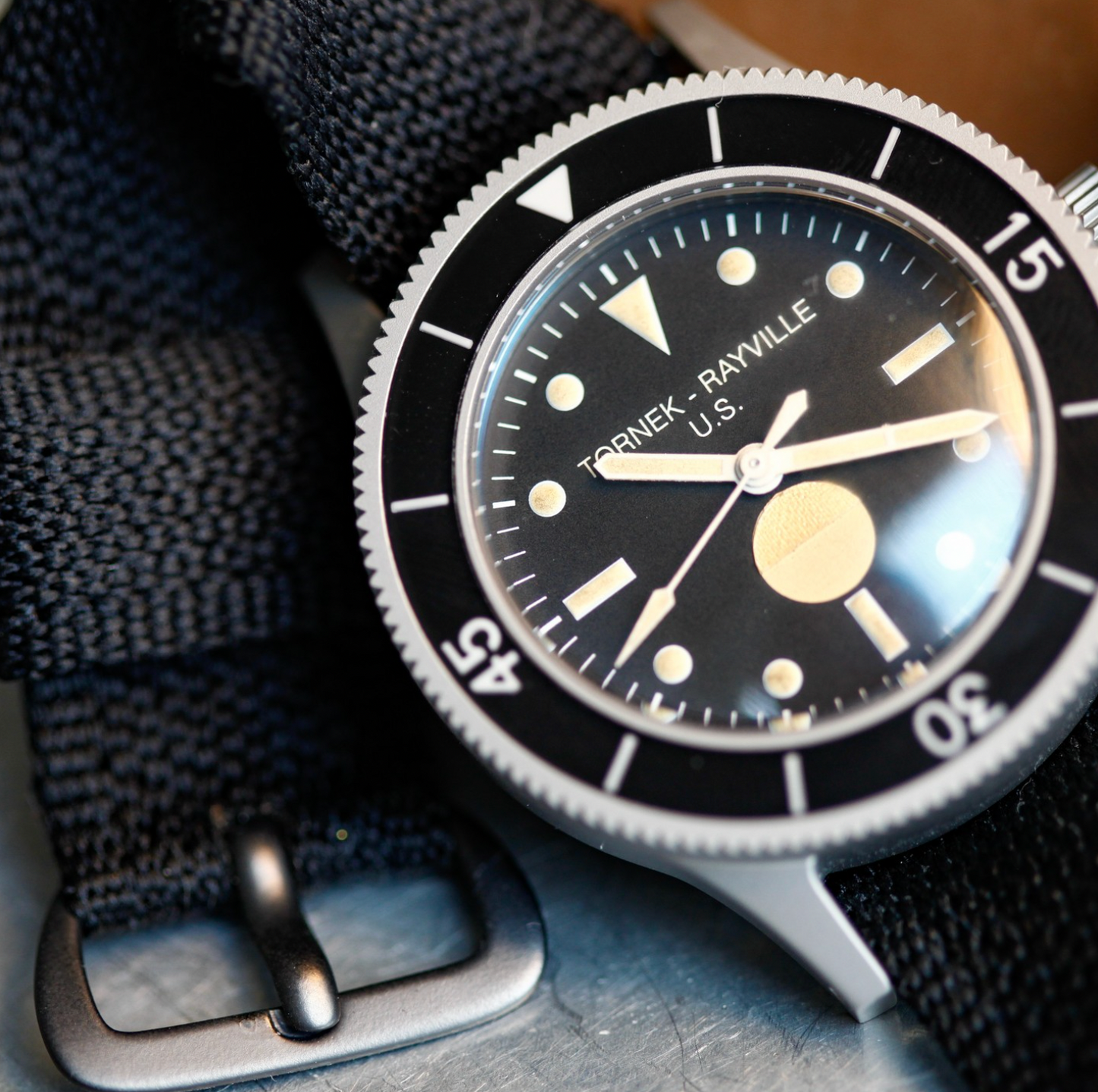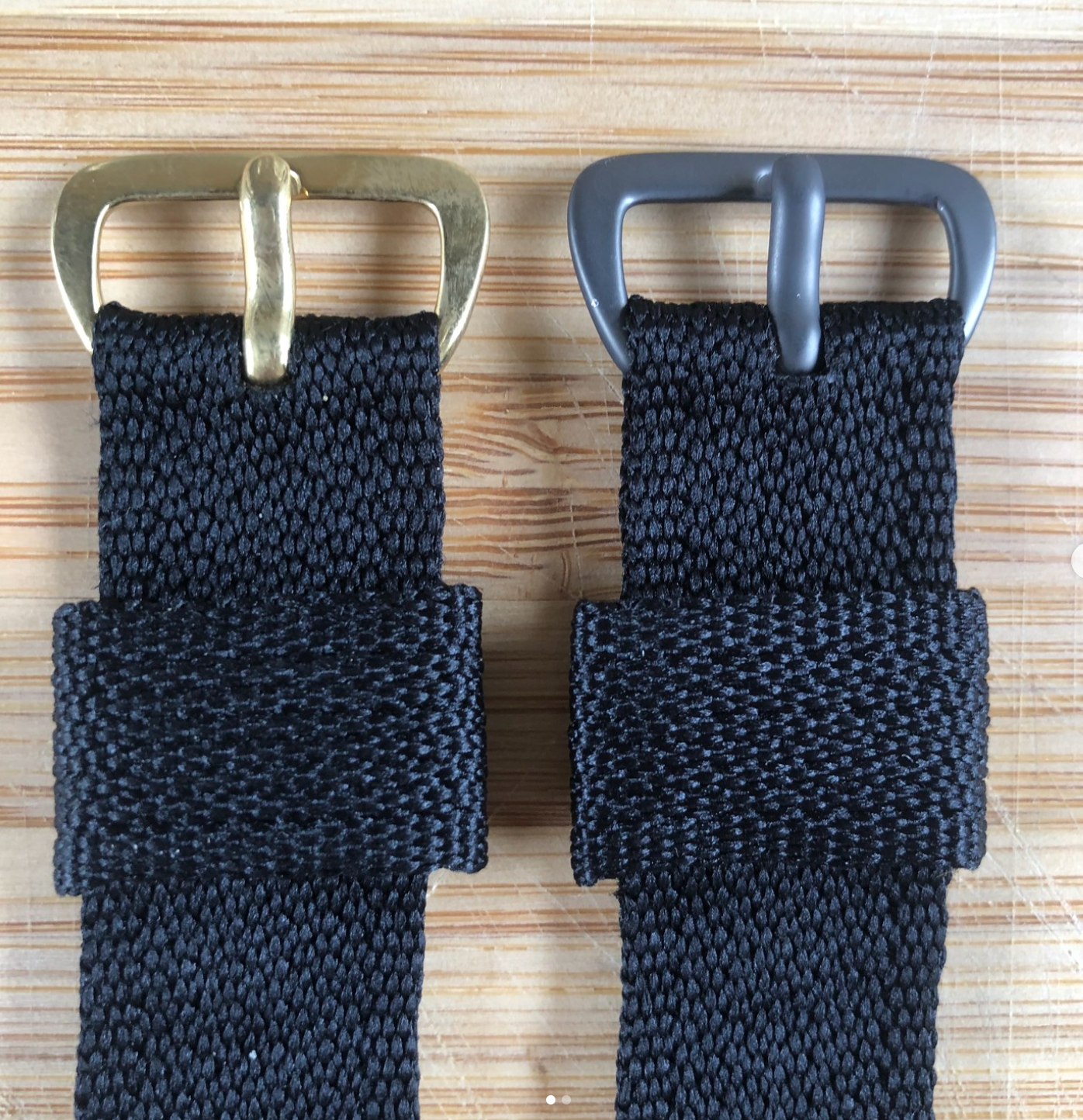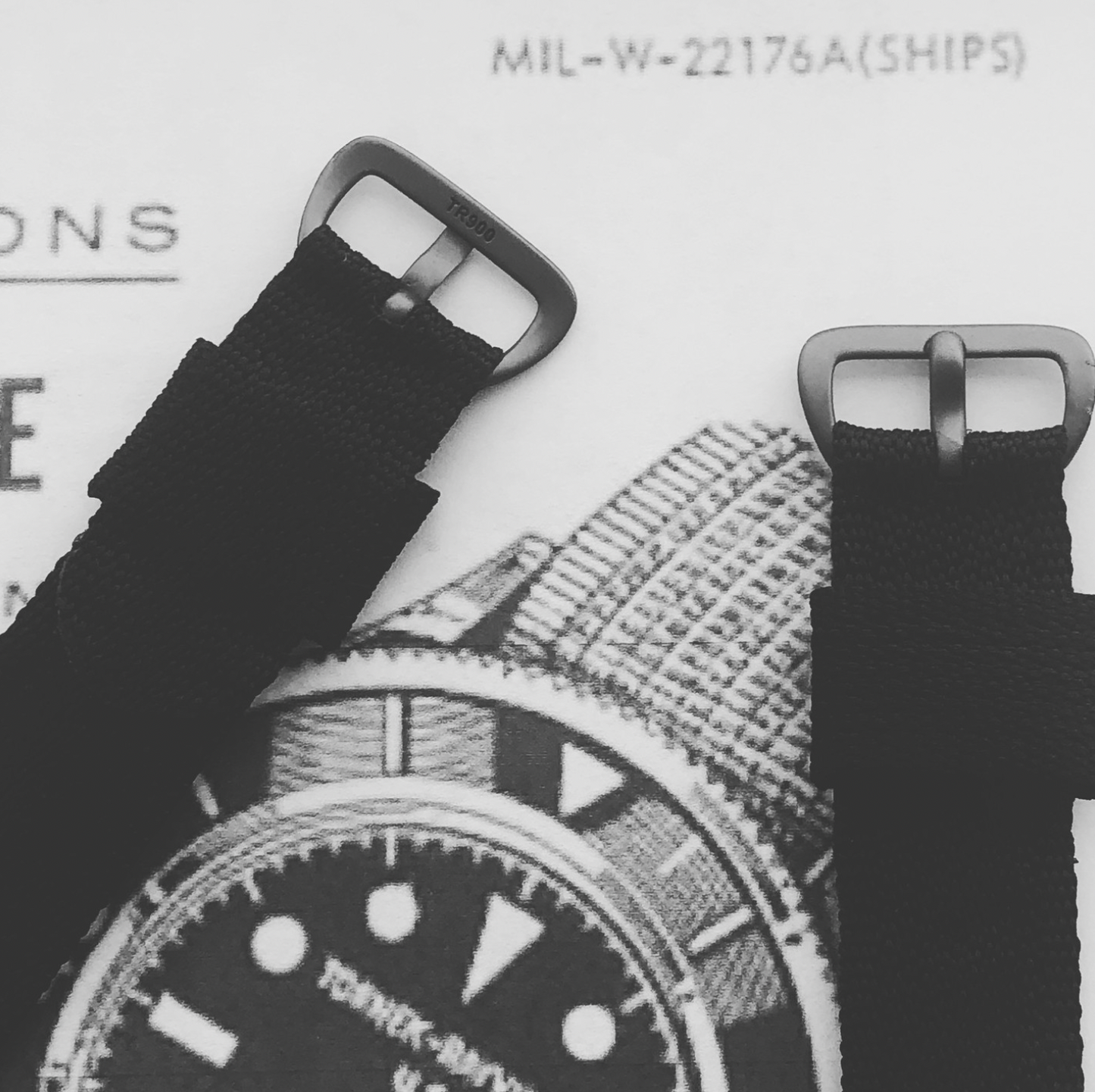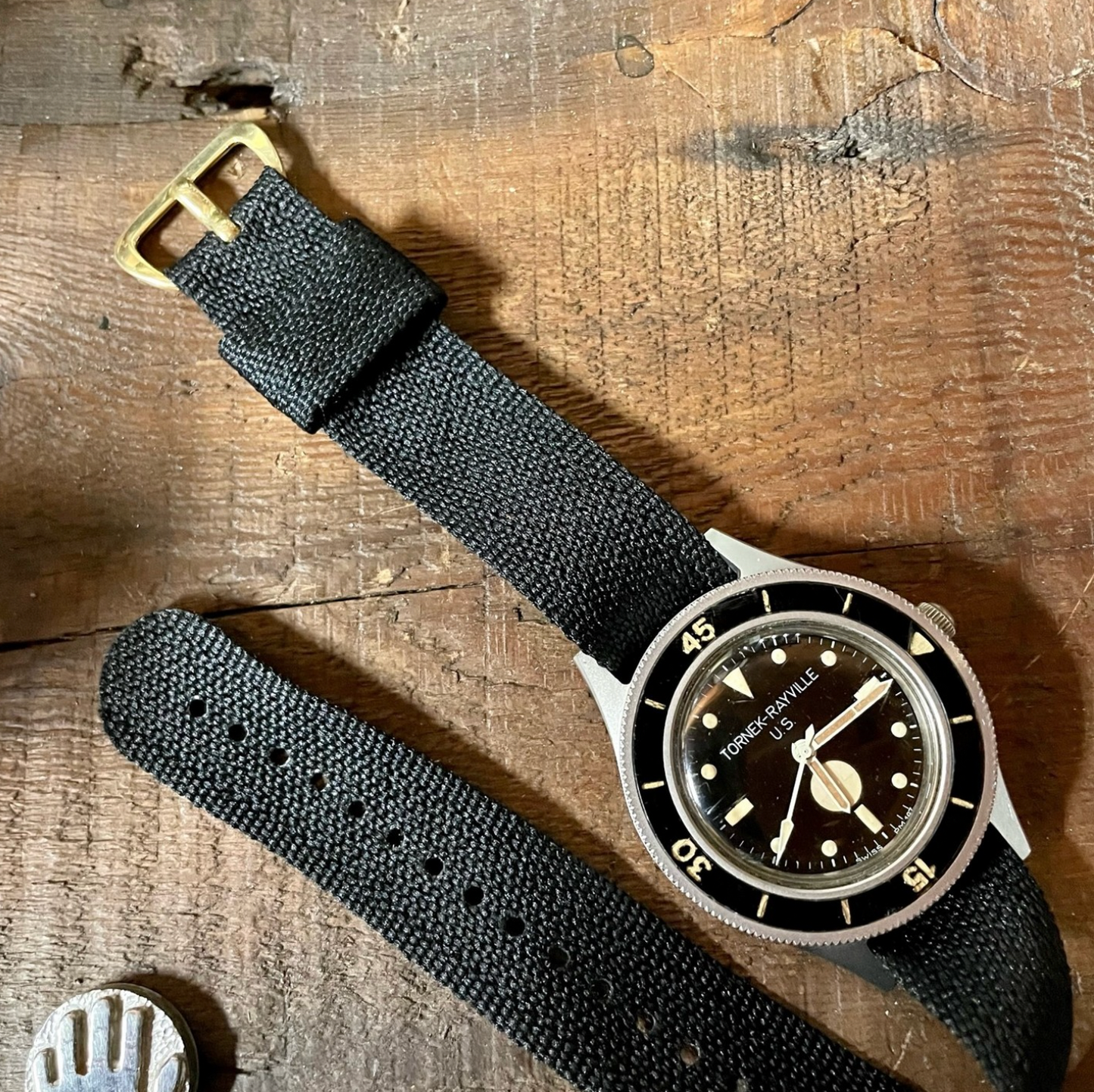In an earlier post, we discussed the Weems bezel 6B/159 watches issued in 1940. The bezel was a mechanical solution to make a hack watch.
While accurate time keeping was important for navigation, early WW2 Bomber Command experience was that target finding was even more important than location finding. In fact, it was eventually decided to form a Pathfinder Squadron and to use pathfinders to improve bombing accuracy.
The non-Weems bezel 6B/159 watch did not have a hacking facility, and was used for many years by the RAF until replaced.
After the the issue of the Weems bezel 6B/159 watch in early 1940, later in 1940 non-Weems watches by Ebel (cal 99), Longines (cal 10.68N), and Waltham (cal 870) were issued. The reason for the change in design related purely to cost and availability.
These A.M. marked 6B/159 watches were supplied to the Air Ministry and marked with the issue number and year of issue. There was no marking Mk VIIA.
Air Publication 1275A from June 1957 states : The wrist watch Mk. 7A (Stores Ref 6B/159) is supplied for the use of the navigators of aircraft and is provided with a strong leather strap (Stores Ref 6B/169) sewn to the watch. An alternative fabric strap (Stores Ref 6B/321) is also available.

This is confirmed in Air Publication 1086 which lists the Mark 7 watch, with the leather strap, and the fabric strap as accessories.

A NOS Ebel 6B/159 watch is shown below on a 6B/169 strap.

Image courtesy MWR forum user : Bill in Sacramento

A later version of the 6B/169 strap is shown above.
The 6B/321 fabric strap has not been seen stamped, but Air Ministry supplied compasses from WW2 have been seen with single thickness khaki straps with brass shouldered buckles, and these are suspected to be the 6B/321 strap. Fabric widths of 15mm and 16mm are shown below and the length is about 250mm for the un-shortened strap.

EBEL CAL 99






LONGINES CAL 12.68N


LONGINES 12.68N MOVEMENT SERIAL NO 6100069 FROM EARLY 1940.

LONGINES 6B/159 CASE BACK, SERIAL NO. 10334.
This dial has also been seen with a circle.

The dial has also been seen with an overprint 83817.

WALTHAM CAL 870
The Waltham only had a limited existence as a 6B/159 and is hard to find, almost always rebranded 6B/234, and had spade hands similar to the Longines.


Image courtesy MWR forum user : river rat

Image courtesy MWR forum member : nickb
In 1942, the non-Weems style continued with the issue of 33mm size Cyma (cal 377), Ebel (cal 101, steel case), Smiths and Movado (cal 75) watches.
Also, in 1942 watches by LeCoultre and Omega CK2292 (cal 30T2) were added to the 6B/159 lineup. The iconic trio of Longines, LeCoultre and Omega continued for the remainder of the war, and later.. By the war’s end, the Cyma, Ebel, Movado and Waltham watches had often been remarked as a 6B/234, a category requiring less precision. This may have been to standardise on servicing and maintaining the trio above.
SMITHS 6B/159
The rarest of these watches is the Smiths 6B/159 which probably never got beyond the prototype stage. A couple of examples exist.
The Clockmakers Museum in the Science Museum in London has an unworn Smiths center-seconds 6B/159 from 1942 on display, as shown below, number 12430/42. It has a stitched on pigskin strap. The watch was donated to the Science Museum by Smiths in 1948. It is possible that the case was created in 1942, and the movement inserted in 1944/5 as the MkX 6B/300 was made.




EBEL CAL 101
In 1942 the EBEL was issued with a Cal 101 movement. For the estimated 1500 1942 issue Ebels, the dials remained similar to the 1940 issued Ebels. A red second hand was used.

And the Cal 101 movement.

Ebel on A.F.0210.® olive green strap.

Ebel overprinted 4312 sometimes seen.

CYMA CAL 377

CYMA 6B/159 FROM 1942

Cyma Cal 377 below.

The Cyma had unique a unique red second hand. Serial no 11570/42 below.
Cyma on A.F.0210.® olive green strap.





MOVADO CAL 75

The Cal 75 movement.

The Movado has been seen with an overprinted dial (4312) as for the Ebel. The reason for this is unknown.

A smaller size Movado with a 1940 case back and perhaps refinished dial similar to the Ebel Cal 99 is shown below.

The 1942 Movado has been reissued as a 6B/234

Images courtesy NAWCC member Halliwag

Omega and LeCoultre joined the Longines model as major 6B/159 suppliers in 1942.
OMEGA


The Omega watch initially had a thin crown. As in the advertisement above, this watch has the big omega symbol, and Swiss Made on the dial, with a flat top 4.


SERIAL NO 1126/42 AND SNAP BACK CASE.
Earlier 6B/159 watches were marked A.M. but after 1943 they were marked with the pheon and the issue number with an ‘A’ prefix.


MOVEMENT 30T2 SC
The original model number was 2292.

Some watches were redialled while in service, and the one below is in the Omega Museum, with a small Omega symbol, and pointed 4.

In 1956 any 6B/159 watches still in service were recased in larger 36mm stainless steel Dennison cases, and some had black or white dials fitted by Bill and Sons. The Omega then was fitted with a thicker crown, and a screwed slotted caseback.
Most of these WW2 watches were re-dialled in black but a few, like this one, kept their original dials, or were done in white as in the Omega Museum example above. The Omega symbol is now small, and the 4 does not have a flat top.
The white dial watch is relatively rare.
 .
. 
The larger case required a spacer ring/retainer.


The MoD used this new, larger, 36mm diameter Dennison stainless steel case for all their remaining stock of second world war watches. This new case replaced the low-cost alloy cases which the WW2 watches were originally issued with and allowed the RAF to keep using the high quality movements.
The above manual from July 1966 indicates the 1956 Omega white dial 6B/159 was issued on a 6B/169 strap sewn to the watch. An alternative fabric strap 6B/321 was also available, but the AF0210 strap was often used.
A few Omega HS8 watches were also issued, perhaps several thousand, after the Cyma HS8 issue, in 1943. These had a plated brass case with shorter lugs, stainless steel case back, and spring bars. Model 2292 also. A few watches have been converted to fixed bars and are engraved Bravingtons.


LECOULTRE CAL 450 OR CAL 470
The non Weems Lecoultre 6B/159 had blued steel leaf hands as did the earlier Weems bezel model.
It is thought about 4000 of these were produced.
The first version came signed LeCoultre with a circle in the dial centre. The case was either chromed brass alloy, or more rarely stainless steel, about 32mm diameter, with a snap on case back.
As the original case design was not for military use, the chrome case materials (a kind of brass with chrome plating) suffered from corrosion and a lug often fractured. ⠀A stainless steel case was introduced to prevent breaking the case lug, and the new case lug was thicker and shorter.

Below is the rare stainless steel version with the 450/1 movement, which was used in the Weems 6B/159 model.



LECOULTRE 6B/159 STAINLESS STEEL CASE.
A few early case backs are marked AM xxxx/42 or xxxx/43
More common is the alloy case version with 470 movement


4312 overprinted dials exist.

During service the MoD repainted the dials and two white and a black dial exist. The dials are signed Jaeger-Le-Coultre or just LeCoultre. Sometimes the blued steel hands were replaced (most commonly on the black dial version) with lumed syringe hands.



Here is a Lecoultre dial, on a watch with an original A.F.0210. strap, inherited by the owner’s son. This has an open 9 and open 6 and a square topped 4.

Image courtesy MWR forum member : David SquaGly
In 1956 the MoD recased the 6B/159 into a 36mm diameter stainless screwback case. One reason for this was improved water resistance.
For the LeCoultre model this meant adding a spacer to the dial, and to the movement. Hands were still the blued leaf, or syringe.



The case contained a dust cover which was also used to retain the movement in the larger case.


Below is an advertisement from the 1960’s advertising the Navigator Wristwatch, as a military surplus item. The black dial version above is identical.

Konrad Krinim has the following page in his book. 3 LeCoultre watches with similar production dates have different dials due to the re-dial program.

A rare 1956 recased example on an original A.F.0210. strap.

Image courtesy MWR forum user : nickb
LONGINES CAL 10.68N


A black dial version below redialed in the original case left, and a re-cased watch from 1956 right.


A variety of fonts were used as above and below.
 .
. 
Images above courtesy MWR user ; nickb left and enochRoot right
These latter 3 brands, Longines, Omega and LeCoultre remained in service until replaced by the 6B/346 or Mk. XI watch in 1949, taking many features of (or contributing to) the black dial 6B/159 model above.
Collectors have driven up the price to several thousand dollars for excellent examples.
Now, however, Longines has reissued a heritage version, the Longines Heritage Military watch, perhaps to celebrate the 100th anniversary of the RAF in 2018. The case is 38.5mm diameter, and the dial and hands true to the 1940’s model. This has faux patina applied for the enthusiast.
Inside the Heritage Military is the Longines’ caliber L888.2 (ETA A31.L01) an automatic movement with 21 jewels, 64 hours of power reserve and a 25.200 vph (3.5Hz).
The watch is shown below on an A.F.0210.® NATO style strap.

Another Longines Heritage photo, on an A.F.0210. strap.

![THE NON WEEMS 6B/159 [AND THE HS8]](http://af0210strap.com/cdn/shop/articles/D2-The-Longines-Heritage-Military-L2_819_4_93_2-Watch-1680x1680_jpg.webp?v=1680847772&width=1100)

